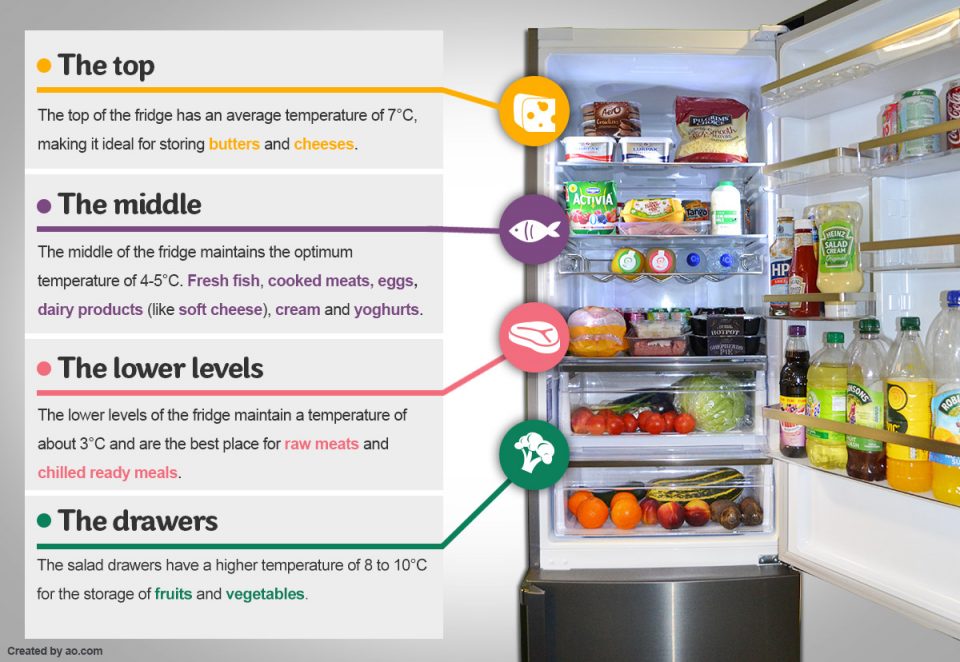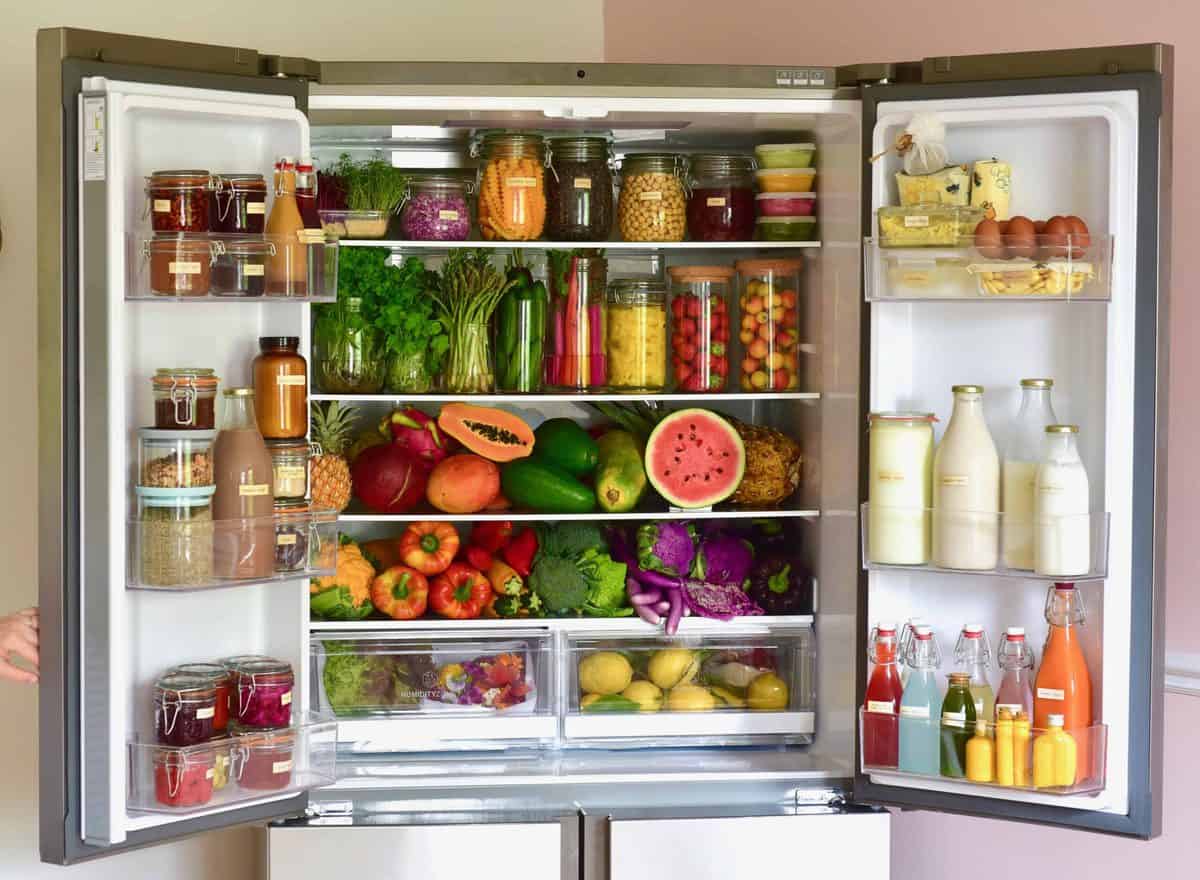Refrigerator Storage Recommendations

Put em in the fridge – Refrigeration is essential for preserving the quality and safety of food. By storing food at the correct temperature and humidity, you can slow down the growth of bacteria and prevent spoilage. Here are some general guidelines for refrigerating food:
Store food at a temperature of 40°F or below. This is the ideal temperature for slowing down the growth of bacteria.
To extend the life of your fresh produce, put ’em in the fridge! But what about that mysterious word on your watch? The Spanish word “reloj” means “watch” in English. So, next time you need to know the time, just glance at your reloj and you’ll be good to go.
And remember, if you want to keep your fruits and veggies fresh, put ’em in the fridge!
Keep food covered to prevent it from drying out and absorbing odors from other foods.
I’ve been putting them in the fridge for years, but I never thought to put them in the freezer. I wonder if that would work? I’ll have to try it next time. In the meantime, I’ll just keep putting them in the fridge.
I’m sure exodo peso pluma would approve. After all, he’s the one who taught me how to do it in the first place.
Do not overcrowd the refrigerator. This will allow air to circulate and help keep food cold.
After you’ve danced your heart out and put ’em in the fridge, it’s time to chill with some soothing tunes. Check out the reloj lyrics for a dose of mellow vibes. Let the lyrics wash over you like a gentle breeze, calming your mind and setting the perfect mood for a relaxing evening.
As you unwind with the music, don’t forget to keep your favorite snacks and drinks chilled in the fridge, ready for whenever you need a refreshing treat.
Discard any food that has been in the refrigerator for more than a week, or that shows signs of spoilage, such as mold or off-odors.
The put ’em in the fridge is the best way to keep your food fresh. However, if you’re looking for a more stylish way to store your leftovers, then you should check out the sr smith peso pluma. This sleek and modern fridge is perfect for any kitchen, and it will keep your food fresh for days.
So, if you’re tired of your old fridge, then it’s time to upgrade to the put ’em in the fridge.
Dairy Products
Dairy products, such as milk, cheese, and yogurt, should be refrigerated immediately after opening. Milk can be stored in the refrigerator for up to 7 days, while cheese can be stored for up to 2 weeks. Yogurt can be stored in the refrigerator for up to 2 weeks.
Put ’em in the fridge, that’s what you do with leftovers. But wait, did you know there’s a song called “Put ’em in the Fridge” by Peso Pluma? Check out the lyrics and you’ll see what I mean. So, put ’em in the fridge, whether it’s food or music!
Meat and Poultry
Meat and poultry should be refrigerated immediately after purchase. Raw meat and poultry can be stored in the refrigerator for up to 3 days, while cooked meat and poultry can be stored for up to 4 days.
Produce
Produce should be refrigerated as soon as possible after purchase. Fruits and vegetables can be stored in the refrigerator for up to 7 days, depending on the type of produce.
Condiments
Condiments, such as ketchup, mustard, and mayonnaise, can be stored in the refrigerator for up to 2 weeks after opening.
Maximizing Fridge Space

To maximize fridge space and efficiency, there are several strategies to employ. This involves organizing the refrigerator in a way that utilizes all available compartments effectively, including drawers, shelves, and door pockets.
By implementing these tips, you can not only increase the storage capacity of your refrigerator but also enhance its functionality and ease of use.
Utilizing Fridge Compartments
Different compartments within the refrigerator are designed to accommodate specific types of food items. Understanding their intended purposes can help optimize fridge space and maintain food quality.
- Drawers: Drawers are ideal for storing fruits and vegetables. They provide a humid environment that helps preserve freshness and prevent wilting.
- Shelves: Shelves are versatile and can accommodate a variety of food items, including dairy products, leftovers, and condiments. Adjustable shelves allow for customization to fit different-sized containers.
- Door pockets: Door pockets are convenient for storing smaller items that need to be easily accessible, such as beverages, snacks, and condiments.
Food Preservation Techniques: Put Em In The Fridge
Refrigeration is a critical food preservation technique that inhibits microbial growth and enzymatic reactions, extending the shelf life of perishable items. By maintaining a low temperature, refrigeration slows down the metabolic processes of microorganisms, preventing their proliferation and spoilage. Additionally, refrigeration inhibits enzymatic reactions responsible for food deterioration, such as the browning of fruits and vegetables.
Specific Examples of Refrigeration’s Benefits, Put em in the fridge
Refrigeration significantly extends the shelf life of various food items, including:
- Fruits: Refrigeration slows down the ripening process, preserving the freshness and nutritional value of fruits like berries, apples, and bananas.
- Vegetables: Refrigeration inhibits the growth of spoilage-causing bacteria, maintaining the crispness and flavor of vegetables like leafy greens, broccoli, and carrots.
- Prepared meals: Refrigeration prevents the growth of harmful bacteria in cooked foods, extending their shelf life and ensuring food safety.
Temperature Control, Vacuum Sealing, and Other Preservation Methods
Temperature control is crucial in refrigeration, with optimal temperatures varying depending on the food item. Vacuum sealing removes air from food packaging, creating an oxygen-depleted environment that inhibits microbial growth. Other preservation methods, such as freezing and canning, further extend food shelf life by inhibiting microbial activity and enzymatic reactions.